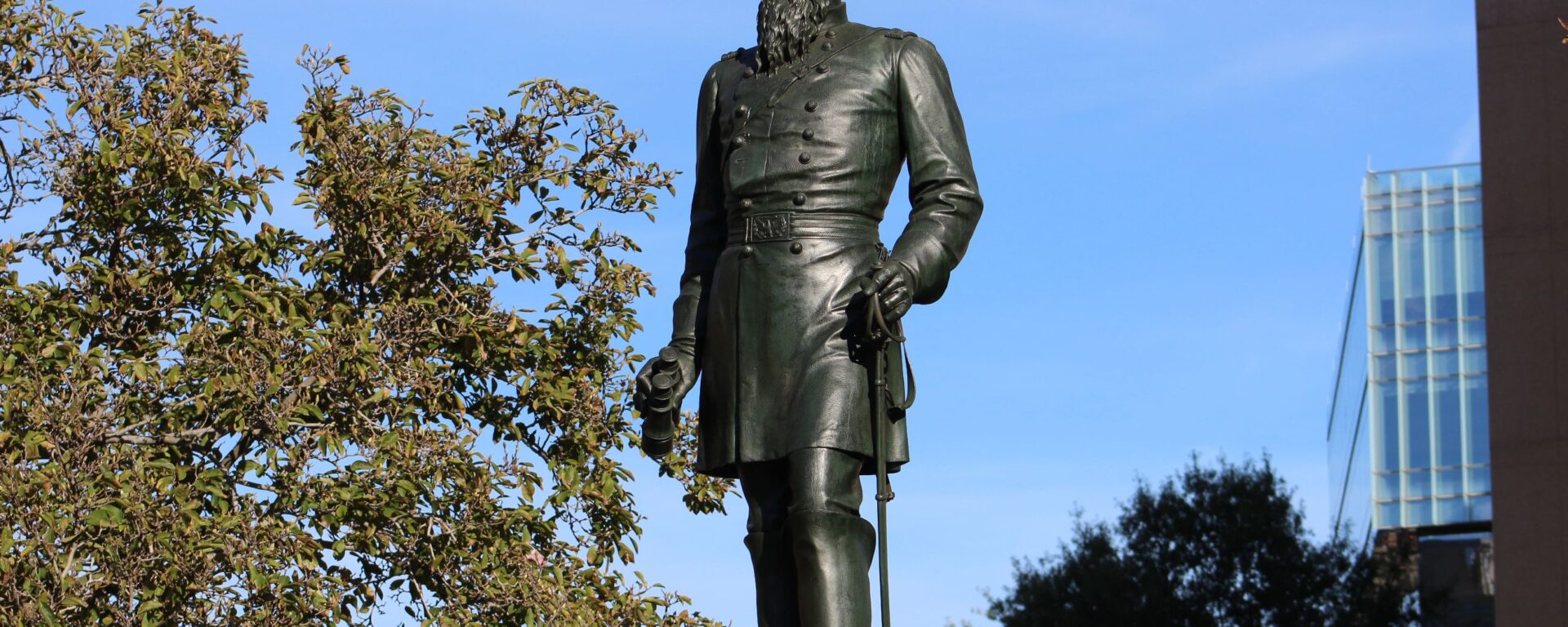“We will stand by the flag of our country and appeal to the God of Battles!”
In a quiet park in Foggy Bottom, between 18th and 19th Streets NW, stands the statue of General John A. Rawlins. South of the General Services Administration and north of the Department of the Interior, the park doesn’t see many visitors even though it has a fountain, two reflecting pools, and plenty of benches. The park is also lined with tulip magnolias, which put on a vivid show of pink blossoms in March.

When the statue (the third oldest in the city) was erected in November 1874 there was no official ceremony dedicating it. By 1880, the park was neglected and run-down, and a veterans’ group demanded that it be moved. It was placed near where the FBI building stands today on 10th Street NW. A few years later it was moved again, down the road one block, to Pennsylvania Avenue near where the US Navy Memorial Plaza is located. It was moved for the final time in 1931 to its original location, and in 1938 the park was beautified to its current condition.
The statue of Rawlins is six feet tall and was sculpted from the bronze of captured Confederate cannons by Joseph A. Bailly in the 1870s. Bailly is best known for his statue of George Washington that stands in front of Independence Hall in Philadelphia. A bearded Rawlins is depicted in his military uniform holding a pair of field glasses in his right hand.

Born and raised in Illinois, Rawlins was a self-made man who worked hard to achieve everything he had. He had very little formal schooling growing up, and instead he directed his own education. He worked as a collier (charcoal maker) to save money for the little bit of higher education he did have but it wasn’t enough. He soon found employment with a lawyer named Isaac P. Stevens who taught him law and Rawlins passed the bar at 23 and soon became well known in his district for his character and ability.
When war broke out in April 1861, Rawlins – now a well-known and well-liked orator – was asked to speak at a town hall meeting about what course he felt the country should take. He summed his position up by saying:
“I have been a Democrat all my life; but this is no longer a question of politics. It is simply country or no country. I have favored every honorable compromise, but the day for compromise is passed. Only one course is left for us. We will stand by the flag of our country, and appeal to the God of battles!”
In attendance at this meeting was Ulysses S. Grant, who was so roused by Rawlins’ words that he recruited a company of volunteers and marched to the Illinois state capitol, Springfield. Rawlins helped to organize these volunteers and Grant requested that he be his aide-de-camp. Rawlins would spend the rest of the war with Grant, rising in rank and responsibility as Grant continued to be promoted.

Rawlins was still with Grant when Grant became president in 1869. He was named Secretary of War but only served for five months. At some point during the war he had contracted tuberculosis, for which there was no cure. That his monument was erected only five years after his death should serve as adequate testimony to the esteem in which his peers held him. But he was also elected the first president of the Society of the Army of the Tennessee, a group whose members included Grant (whose memorial stands before the Capitol), William T. Sherman (whose monument stands next to the White House), James McPherson (whose square is three blocks north of the White House), and John Logan (who has his own circle in D.C.). Although we may have forgotten John Rawlins today, his character was an inspiration to the greatest Americans of the 19th century.

Resources used for this article:
https://en.wikipedia.org/wiki/John_Aaron_Rawlins
https://en.wikipedia.org/wiki/General_John_A._Rawlins
http://query.nytimes.com/mem/archive-free/pdf?res=9500E4DF1431EF34BC4F53DFBF668382679FDE

One thought on “John Aaron Rawlins”
Comments are closed.